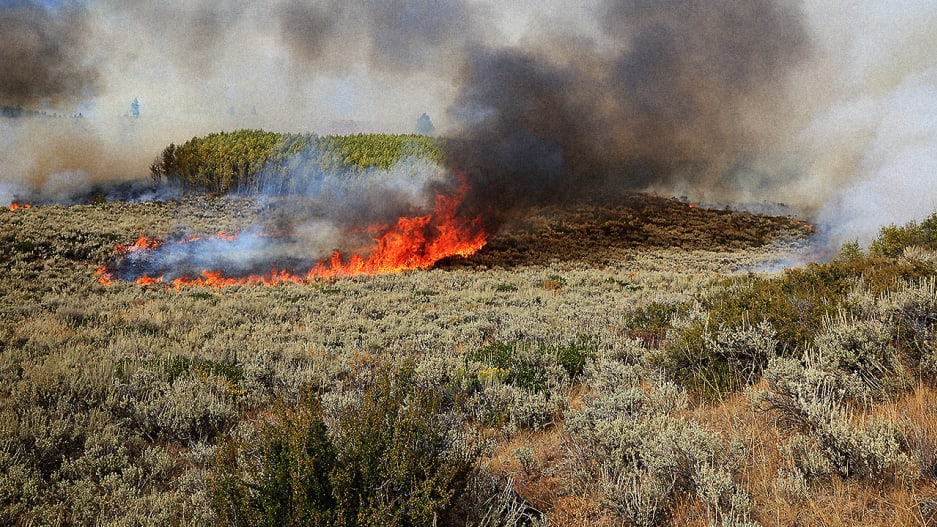
It’s the middle of the fire season in California, and this week, firefighters will begin testing a new way to prevent wildfires from starting—a fire-retardant gel that can be spread on high-risk areas next to freeways.
In the study on the gel, published today in Proceedings of the National Academy of Sciences, researchers looked at where fires actually start. They found that in California, 84% of the 305,000 fires in the past decade started at roadsides, where a cigarette butt tossed out a car window or an overheated car pulling to the side of the road can easily ignite dry grass. “The fires reproducibly happened in the exact same areas year after year,” says Eric Appel, the study’s senior author and an assistant professor of materials science and engineering. “There are stretches of roadway in California where, in a single four-mile stretch of road, there’s 35 to 40 fires each year.” Other hotspots include campgrounds and areas under power lines (the fire that destroyed the town of Paradise, California, a year ago, killing 85 people, was caused by electrical transmission lines sparking dry, hot vegetation.) While wildfires are natural in California, most “wildfires” are now caused by humans.
If these critical areas could be treated to prevent fires from starting, it could also prevent more widespread destruction. But until this point, it hasn’t been possible to use fire retardants preventatively. “If you were able to prophylactically treat these areas, you would only have to treat a small amount of land to prevent an enormous proportion of the fires that are occurring year after year in California,” says Appel. “But then the issue is there’s no technology that can allow you to do that.” Right now, fire retardants are dropped from airplanes as wildfires are already raging, used to help protect homes as fire crews fight back the blaze. But the chemicals only stay on vegetation temporarily; wind can blow the retardant off the vegetation, and even a heavy dew can wash it away.
“What we sought to do was to engineer materials that when they were sprayed on vegetation, they would adhere better but then also stay there throughout the entirety of the peak fire season to provide protection from ignitions that entire time,” he says. The researchers had previously developed similar hydrogels, which can release drugs slowly over the course of months, for pharmaceutical use. But the gel also does a better job of sticking on vegetation initially—with the typical fire retardant used now, only half makes it on the plant. The new hydrogel can last through light rains and other weather, until the rainy season fully begins and fires are no longer a major risk. The gel itself is water-based and environmentally benign; the company says the fire retardant chemicals used inside are the same as common fertilizer—not ideal to introduce into the environment but in this case used in much tinier quantities than they’re already used in agriculture. When researchers tested spreading the material on grass and then lighting it on fire, the fire quickly extinguished itself.
While the project began as a research study, as the researchers tested the technology—alongside firefighters—they realized that it made sense to bring the product to market, launching a new startup called Ladera Tech. They hope to work with Cal Fire, the state fire protection agency, to apply it throughout the state in the areas most likely to burn, including along power lines. Utilities in California are already beginning to shut off electricity in some areas when fire risk is highest and “harden” electrical equipment to make it less likely to accidentally spark. “What we are effectively doing is hardening the vegetation,” says Appel. “The company’s marketing these materials specifically to treat around or under the transmission and distribution lines and around poles, so that even if a spark were to happen, it wouldn’t lead to an ignition.”























